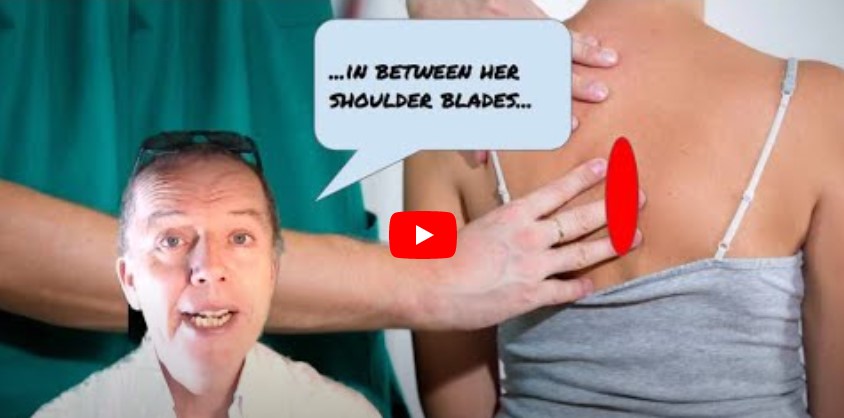A few weeks ago I did a cycle ride from Bath to Bristol. I cycled down to Didcot and took my folding bike on the train to Bath to meet up with Alex, (the older son). While I was waiting for him outside Bath station I popped into the bike shop there (it’s brilliant, btw) and bought a mini-pump, just in case we had a puncture.
The mini-pump got me thinking about the first patient that I ever saw, while I was a student chiropractor down at the AECC college in Bournemouth in the mid 1980s. This lady was in her mid forties and had back pain, in between her shoulder blades. She was a smoker and did enjoy a glass of wine…. I thought that she had a problem with her thoracic spine, but with the benefit of hindsight, she probably didn’t. Mid-back pain is often caused by reflux of the acidic stomach contents up the oesophagus, and by stomach ulcers. The acid in the stomach is produced by parietal cells that ‘pump’ acid into the stomach to help with food digestion. This is why the mini-pump made me think of this patient!
These days there are some pretty effective medications called ‘proton-pump inhibitors’, that reduce the amount of acid in the stomach. A common one that you may have heard of is Omeprazole. They are very safe, and they are effective in the treatment of the symptoms of acid reflux and stomach ulcers. However, like all medications, they have some downsides. Long-term use increases the risk of osteoporosis and fracture risk. They can also increase our risk of cardio-vascular events.
So what can we do, aside from taking these medications to minimise stomach acidity symptoms? Avoid anti-inflammatory medications if you have reflux symptoms, because they may aggravate the issue. There was an article in the BMJ last year that made the following suggestions:
- Avoid foods that precipitate reflux: coffee, alcohol, chocolate and fatty food.
- Avoid foods that irritate the stomach: citrus, carbonated drinks and spicy foods
- Avoid eating late, eating large portions, and avoid smoking. Lose weight
When chiropractors see patients with gastric and reflux issues we will often find tenderness in the mid-thoracic region as well as in the neck (more commonly the right side of the neck, I think). Interestingly the neck is the origin of the phrenic nerve, which both sends information to the diaphragm as well as receiving information from it . The diaphragm helps to prevent gastric reflux. It would be nice if treatment to the neck would help the phrenic nerve to control diaphragmatic function normally, resolving reflux problems, but sadly, this is not the case.
I do wonder, sometimes, whether we can improve the ability of the diaphragm to prevent reflux by increasing our diaphragm tone through singing. I never did ask my patient back then to sing in the shower. Perhaps it would have helped her? Proton-pump inhibitor medications weren’t available back in 1985, but I think she probably would have benefitted from some lifestyle modifications!
Alex and I did make it to Bristol. It’s only about 14 miles. You ride through Staple Hill Tunnel which is slightly eerie, but dramatic. Someone was playing their trombone when we cycled through. We didn’t have any punctures, so the mini-pump didn’t get used on this trip. But it’s good to be prepared!

